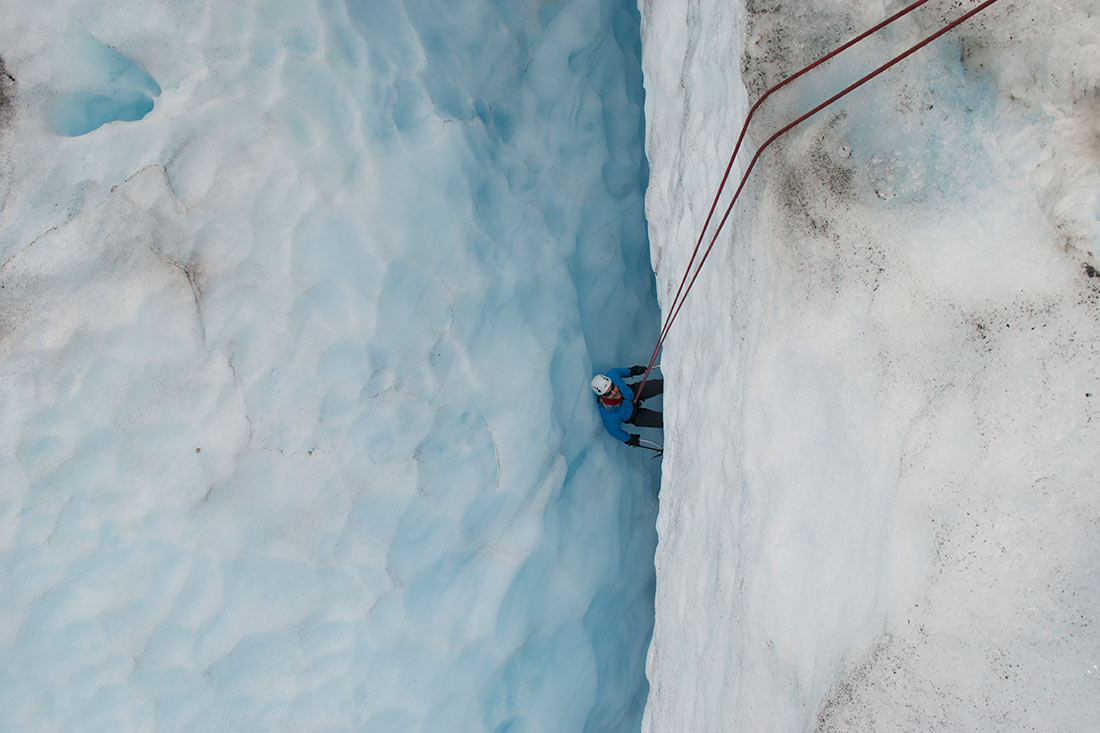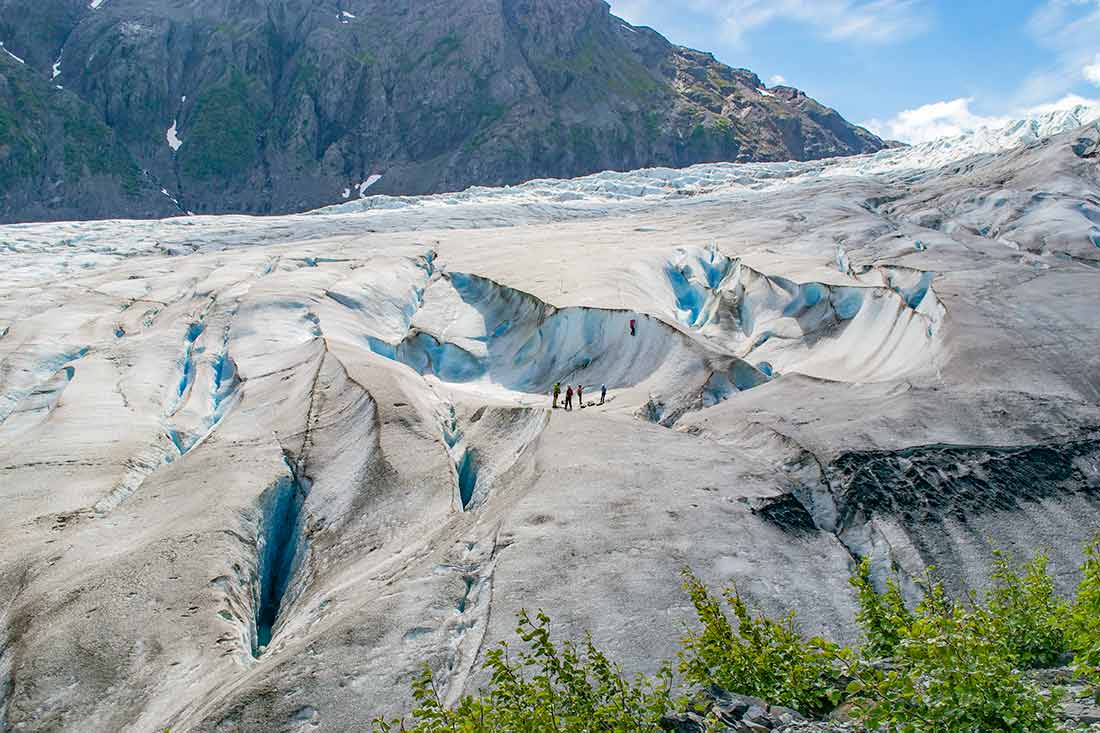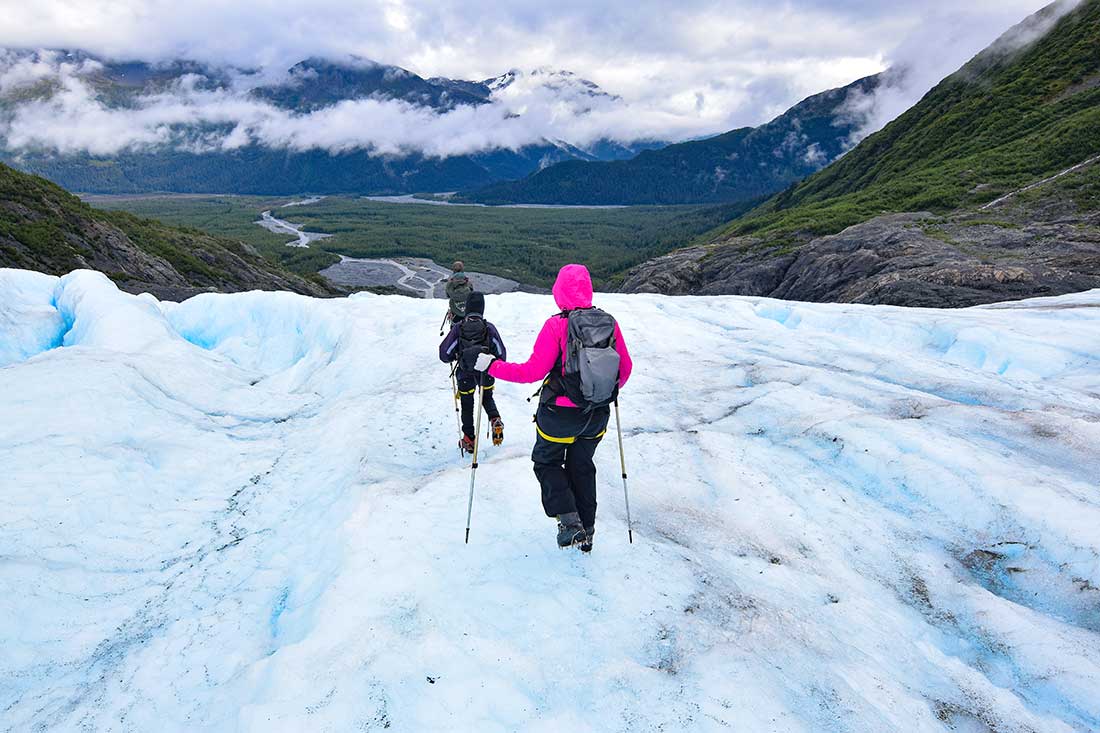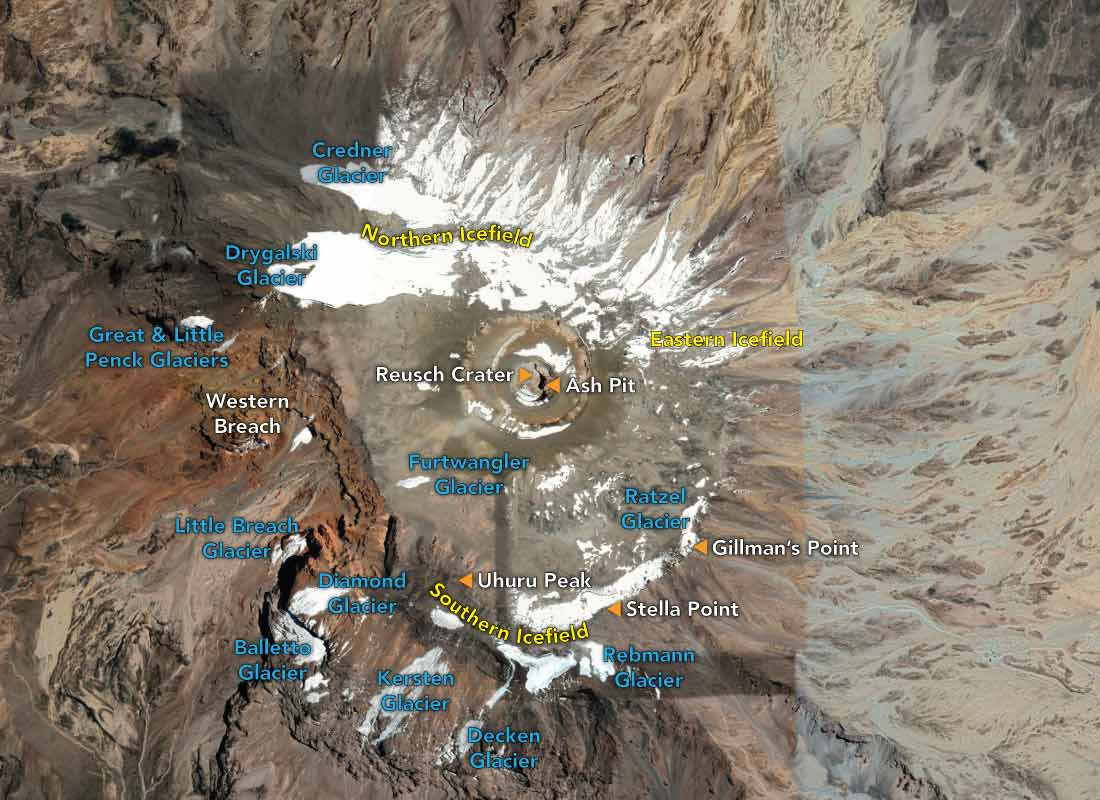When you reach the summit of Kilimanjaro, one of the most beautiful views is of the amazing glacier on Kilimanjaro. However, these glaciers are at the point of disappearing. Scientists believe they may be completely gone by as early as 2030.

Mount Kilimanjaro’s peak reaches an astounding 19,341 feet. Climbers who reach the summit will have a view of Kilimanjaro’s glaciers and icefields. The northern and southern icefields protect the base of some of these glaciers. Unfortunately, as snow has been increasingly disappearing on Kilimanjaro over the years, the icefields have become more and more exposed, resulting in increased melting of the glaciers.
What are Glaciers?
Glaciers consist of snow that over many years, compresses into large ice masses. Glaciers form when snow remains in one location long enough to transform into ice. What makes glaciers unique is their ability to flow. Due to sheer mass, glaciers flow like very slow rivers. Some glaciers are as small as football fields, while others grow to be dozens or even hundreds of miles long.
Glaciers can be found at the north and south poles or high up in the mountains.
There are also tropical glaciers. These ice formations formed at high altitudes on mountains along the earth’s equator.
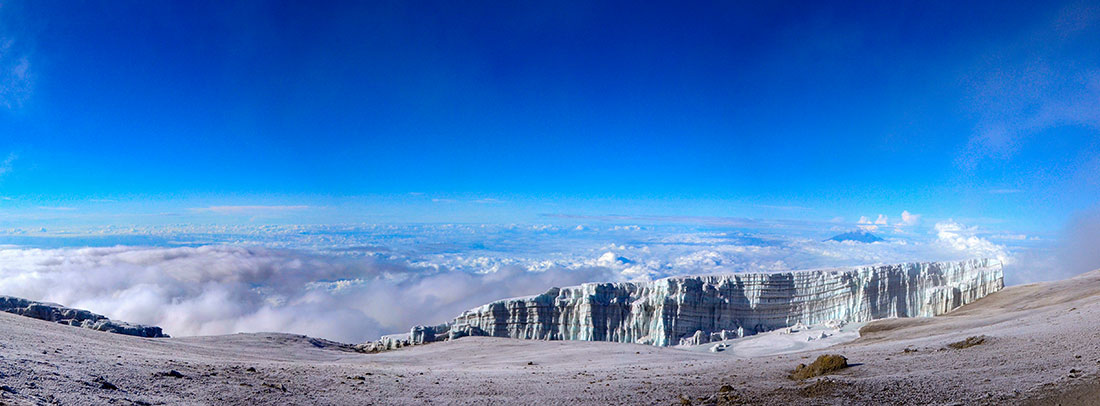
In Africa, there are only three places to find tropical glaciers: In Uganda on Mount Rwenzori and in Kenya, at the summit of Mount Kenya. However, most glaciers in Africa are found on Mount Kilimanjaro in Tanzania. Unfortunately, glaciers around the world and specifically on Kilimanjaro are disappearing due to climate change.
Based on studies of Kilimanjaro’s Northern Ice Field, the age of the glaciers is approximately 11,700 years old. But some areas vulnerable to weather and sunlight have experienced melting and refreezing. Those are estimated to be around 800 years old.
Mapping of Kilimanjaro’s ice has been recorded since the early 1900s. Since 1912, more than 80% of the glaciers on Kilimanjaro have already disappeared. An estimated 85% of Furtwangler Glacier, specifically, melted by the year 2011.
Photos of the glaciers and icefields from even 10 years ago provide startling evidence of the rapid loss of ice.


Some of the most notable tropical glaciers atop Kilimanjaro include:
Rebmann Glacier
- Located near the Southern Icefield
- Named for Johann Rebmann, a German missionary-explorer who was the first European to make a record of glaciers on Kilimanjaro in the year 1848.
Credner Glacier
- Located near the Northern Icefield
- One of the largest remaining glaciers on Kilimanjaro, to date, is rapidly disappearing. Studies conducted in association with the Smithsonian Institute have estimated extinction before the year 2030.
Furtwängler Glacier
- Kilimanjaro’s Largest Glacier
- Estimated extinction: 2030
- Named for Walter Furtwängler, one of the climbers to successfully summit Kilimanjaro in 1912
Time is really running out to see Kilimanjaro’s largest glacier, Furtwängler Glacier. It has been shrinking rapidly.
In 1976 it was about 1,220,000 sq. ft. By 2018 it was down to 120,000 sq. ft.
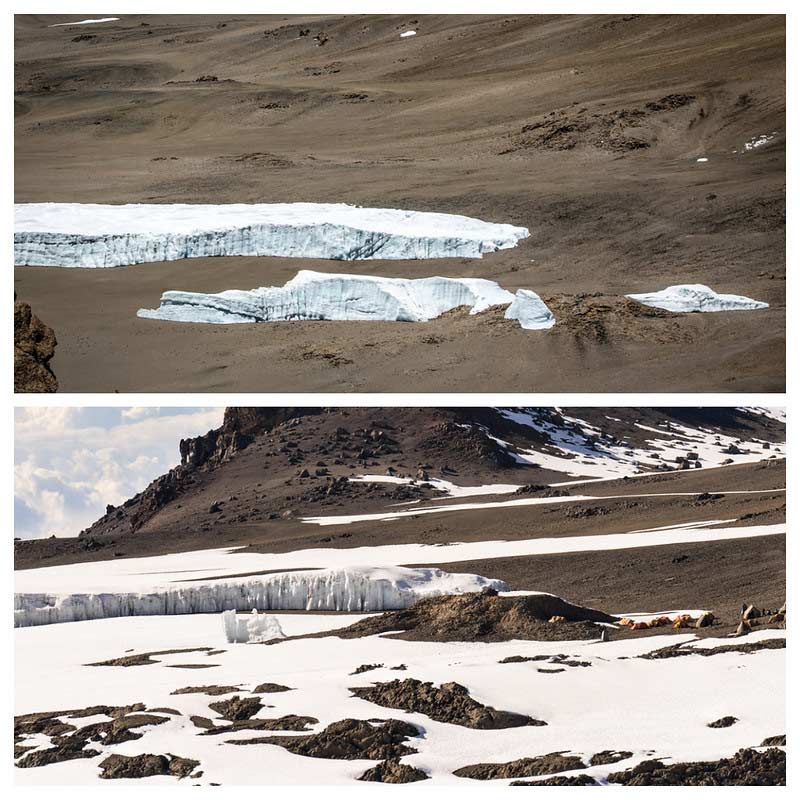
What Can Be Done?
Unfortunately, The destruction of the Furtwängler Glacier and other tropical glaciers on Kilimanjaro is too advanced to be reversed. Science shows that the ice has been receding for centuries. However, the rate of lost ice has measurably sped up in the past few decades.
Studies from the National Academy of Sciences reveal that Kilimanjaro’s glaciers decreased at a rate of approximately 1% from the years 1912 until 1953. From 1989 until 2007, the rate of decrease has more than doubled to a startling 2.5%.
NASA
According to NASA, between 1912 and 2011, the mass of ice on the summit decreased by more than 85 percent. It’s no longer a question of whether the ice will disappear but when.
Planting Trees

There are a few nonprofit organizations attempting to plant millions of trees around the base of Kilimanjaro. One of those organizations is Trees 4 Kilimanjaro. According to their research, 90% of local people depend upon firewood for cooking. This accounts for the equivalent of over 7 million trees cut per year in the Kilimanjaro Region alone.
This loss of trees has caused Kilimanjaro to heat up. They feel the trees may restore the temperatures on the mountain. You’ll see evidence of the replanting near the Londerossi Gate.
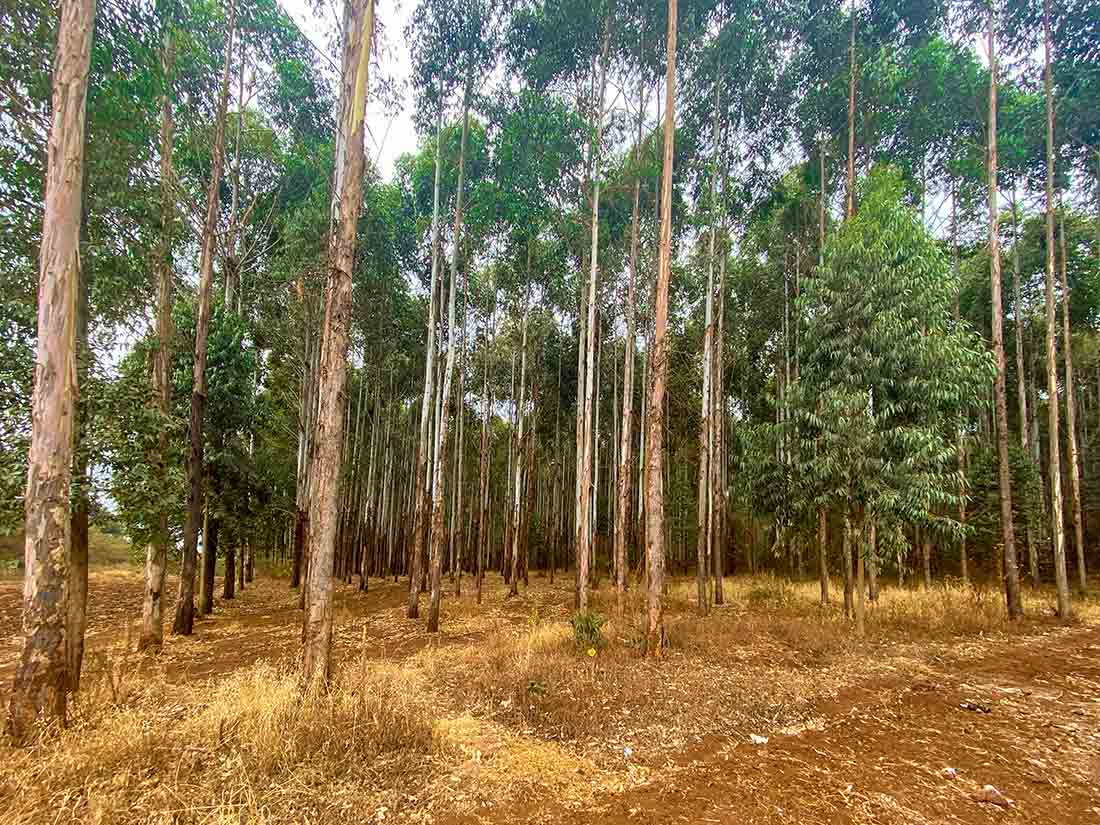
Another commonly believed theory. One that may or may not have scientific backing, is that the glaciers on Kilimanjaro keep the volcano cool and in turn dormant. But with the loss of glaciers and cooling, Kilimanjaro may roar back to life and once again become an active volcano.
Final Thoughts
The loss of Kilimanjaro’s glaciers is a sad truth. These ice formations which stood for an estimated 11,700 years have now decreased to almost nothing.
We want clients to experience Africa’s tallest mountain and the unrivaled natural beauty found in Tanzania. We hope you get to see Kilimanjaro’s icefields and glaciers before it is too late.

